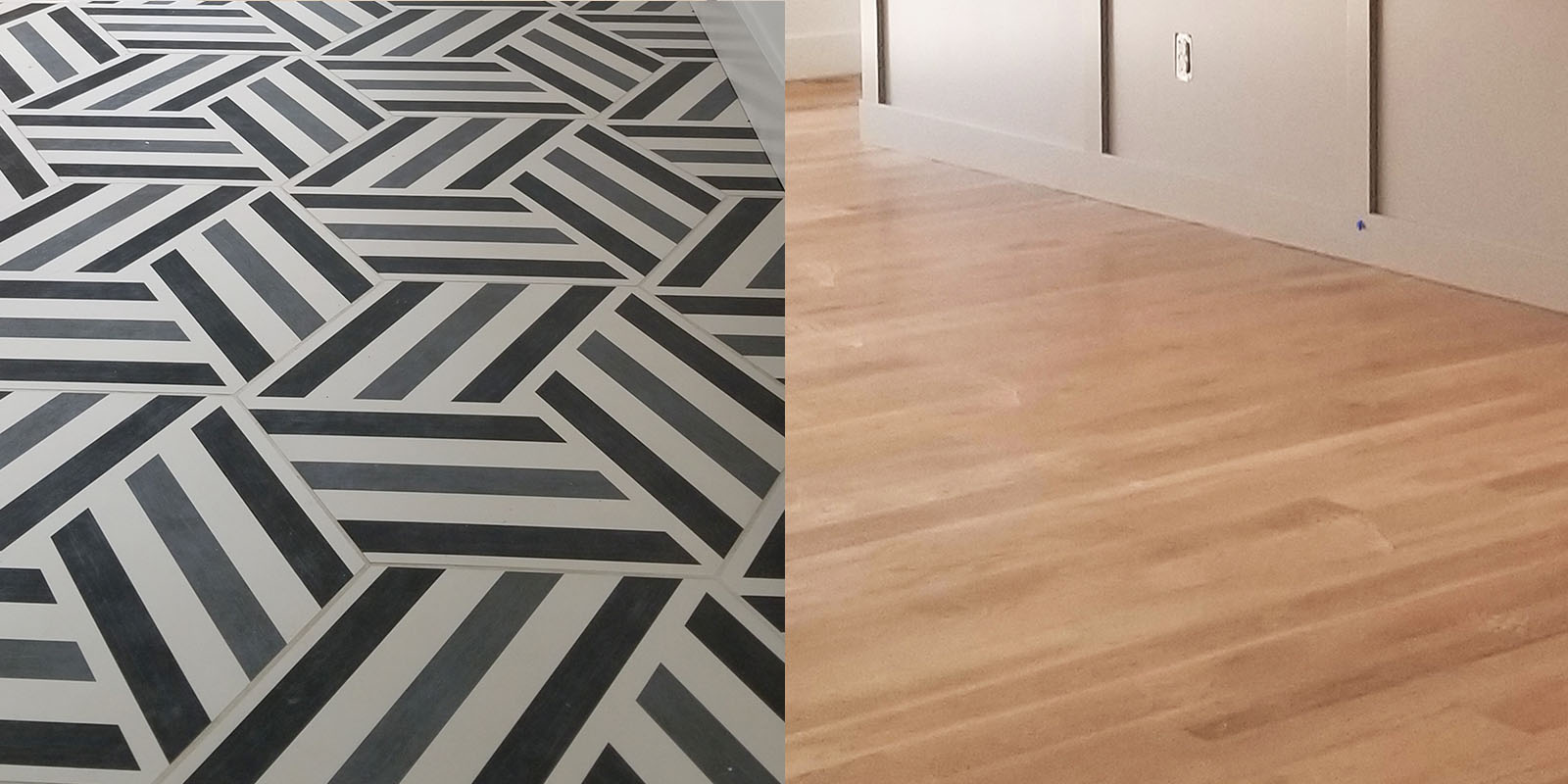 Let’s take a look at the upsides and downsides of the wood floor.
Let’s take a look at the upsides and downsides of the wood floor.
Upsides:
- Wooden floor adds warmth to the room as it doesn’t get cold in colder temperatures.
- Wooden flooring looks splendid and comfortable and when converged with other kinds of flooring, it can give a sleek look to your room.
- Hardwood flooring collections from online tile stores arrive in a wide variety to coordinate the look and feel of your home.
Downsides:
- Wooden flooring is prone to termite attack.
- Staining of the flooring may occur in high use zones.
- Hardwood flooring is not fire-resistant.
- Hardwood flooring is prone to scratches hence it may not be the best option if you have pets. Also, try to avoid this alternative for rooms that are exposed to dampness and water.
Tile flooring is a viable and prudent flooring alternative. Natural stone tiles and wood looking porcelain tiles are some of the most popular options when it comes to flooring.
They have a diverse range of textures, shapes, colors, and materials that offer limitless alternatives that can go perfectly with any project and budget.
Pros:
- The wood looking porcelain tiles or natural stone tiles are easy to maintain as they can be effectively swiped, wiped and cleaned.
- Natural stone floor tile does not attract dust and hence they are bacteria free.
- Wood looking ceramic tile or natural stone tiles are also fireproof.
- Anti slip tile variants are also available in the market.
Cons:
- Natural stone tiles are generally cool underfoot so at places with cold weather, they may not prove to be the best alternative.
- Natural stone tiles and wood like porcelain tiles require minimal maintenance as it is scratch resistant and abrasion resistant.
- Natural stone tiles are most suitable for wet areas and can be used as bathroom and kitchen tiles because they have more resistance to water.


